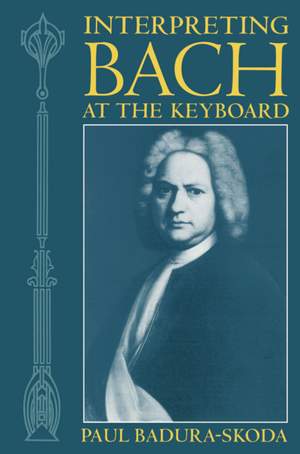Interpreting Bach at the Keyboard
- Author: Badura-Skoda
- Translator: Clayton, Alfred
Badura-Skoda's ability to sustain a propulsive melodic line amid wells of sound become a hallmark of his virtuosity —
Book
$135.25Special import
Contents
- Abbreviations
- A note on terminology
- Part 1. General Problems of Interpretation
- 1 An authentic eighteenth- century performance source: C.F. Colt's organ-barrels
- 2 Studies in rhythm
- 3 In search of the correct Bach tempo
- 4 Bach's articulation
- 5 Dynamics
- 6 Problems of sonority
- 7 Problems of harpsichord and piano technique, and of expressive playing
- 8 The Urtext problem: An imaginary interview
- 9 Rendering the structure as a whole
- 10 Prelude in E flat minor and Fugue in D sharp minor, WTC I, BWV 853. An analysis for performance
- Part II. Studies in Ornamentation
- 11 Introduction
- 12 The development of ornamentation in the seventeenth and eighteenth centuries
- 13 J.S. Bach's ornaments: Some general remarks
- 14 Pralltriller
- 15 Appoggiaturas
- 16 The loner trill
- 17 Bach's mordent
- 18 Arpeggios
- 19 The application of ornaments that are not notated
- 20 Free embellishments in Bach's keyboard works
- 21 Epilogue
- Appendix 1. Some recommended editions of Bach's keyboard works
- Appendix 2. Some textual and interpretational problems in Bach's Chromatic Fantasia and Fugue, BWV 903
- Appendix 3. J.M. Gesner, 'Johann Sebastian Bach as conductor, keyboard player, and organist' (Gottingen, 1738)
- Appendix 4. Excerpt from the Article 'Takt' in J.G. Sulzer's Allgemeine Theorie der schonen Kunste, vol. ii (Leipzig, 1774)
- Appendix 5. The Dedication of Partita No. 1 (BWV 825) and the Dedicatory Poem
- Appendix 6. Friedrich Blume and Hans Joachim Moser
- Bibliography
- Index



